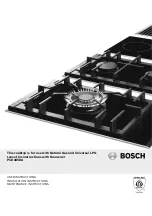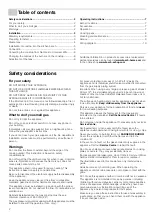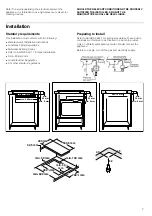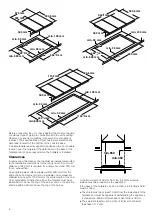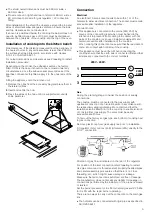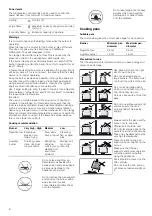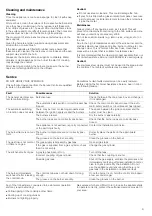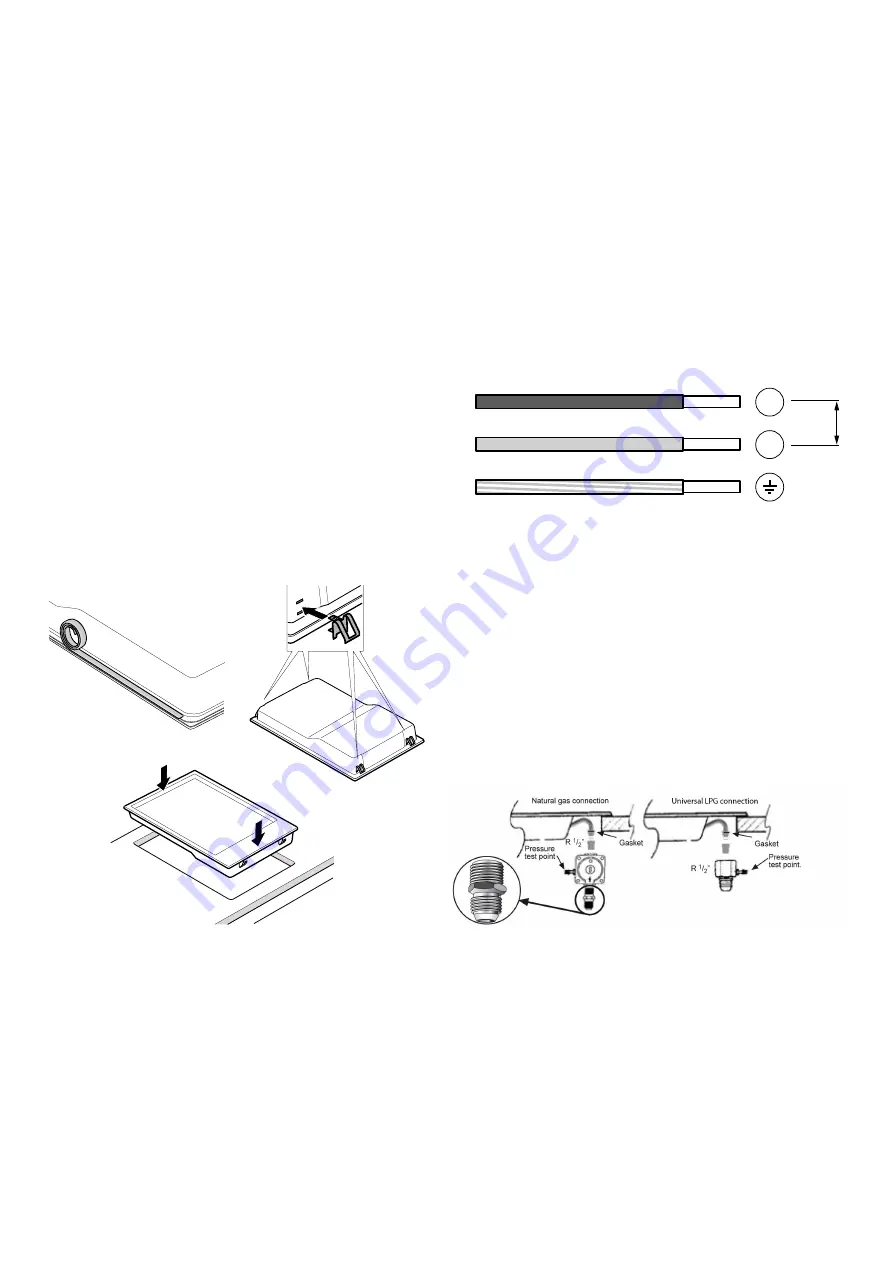
5
■
The shield overall dimensions must be 560 mm wide x
480 mm deep.
■
Provide cut-out in right hand rear of shield of 80 mm wide x
80 mm deep to provide for gas regulator / LP connection
fitting.
After installation of the shield the clearance around the top and
sides of shield will allow adequate ventilation. Ensure the side
and top clearances are not obstructed.
If an oven is positioned below the cooktop the barrier does not
need to be fitted, but a space of 35 mm must be maintained
between the underside of the cooktop and the top of the oven.
Installation of cooktop into the kitchen bench
Side clearances: If the distance measured from the periphery of
the nearest burner to any vertical surface is less than 200 mm,
the surface shall be protected in accordance with clauses
6.10.1.2 of AS/NZS 5601.1.
For cutout dimensions and clearances see
Preparing to install
.
Installation procedure:
Depending on the model, the adhesive seal may be factory-
fitted. If this is the case, it should not be removed under any
circumstances, since the adhesive seal prevents leaks. If the
seal has not been factory-fitted, apply it to the underside of the
hob.
Fitting the appliance onto the kitchen unit:
1.
Remove the clips from the accessory bag and place them in
the lateral orifices.
2.
Insert and centre the hob.
3.
Press the sides of the hob until it is supported around its
entire perimeter.
Connection
Electrical
An electrical 10 amp socket needs to be within 1 m of the
hotplate to allow electrical connection. The socket must remain
accessible after installation of the appliance.
Important notes:
■
This appliance is connected to the mains (240 VAC) by
means of the connecting lead which must be fixed to the
kitchen unit to prevent it from coming into contact with hot
parts of the cooktop (or an oven installed underneath) and
remain accessible after installation of the cooktop.
When making this connection make sure that the lead cannot
come into contact with hot parts of the cooktop.
■
This appliance must be earthed. When connecting the
cooktop ensure that the earth wire is connected first and that
all wires are connected to the correct terminals.
Gas
During the planning stage, consider the position of supply
connections.
The cooktop must be connected to the gas supply with
upstream connection of an isolation valve in accordance with
the respectively valid regulations. We recommend that the
isolation valve be fitted prior to the cooktop to enable isolation
of cooktop from gas supply. The valve must be easily
accessible at all times.
To find out the factory set gas type, see bottom of cooktop next
to gas connection.
Remove plastic cap from gas supply line prior to installation.
Fit regulator (N.G.) or a test point (Universal LPG) directly to the
R 1/2’’ connection.
Direction of gas flow is indicated on the rear of the regulator.
For position of the inlet connection refer
Preparing to install
:
Use pipe compound or thread sealant, properly theaded pipes
and careful assembly procedure so that there is no cross
threading, etc., which might cause damage or leakage.
Make sure that all connections peformed are free of leakage.
The manufacturer does not accept any liability for leakage on
connections performed by the installer or if the L-tube is moved
or twisted.
Set the burner pressure to 1.0 kPa for natural gas and 2.75 kPa
for U-LPG with the rapid burner operating.
There are two ways to carry out the connection to the main gas
line:
■
The hotplate can be connected with rigid pipe as specified in
AS/NZS 5601.1
/
9
9
1
99 a

